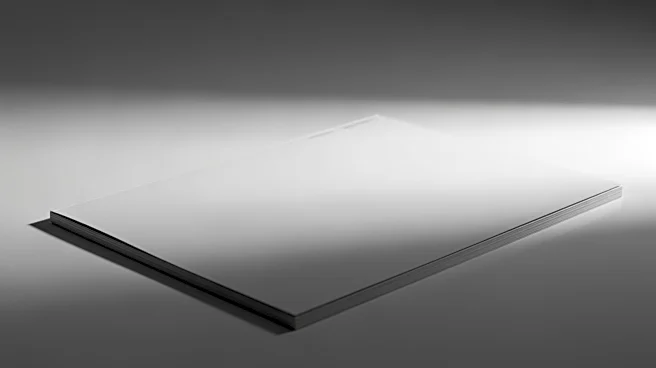What's Happening?
TIME magazine's latest cover featuring President Trump has sparked controversy due to its alleged visual reference to a notorious photograph of Alfried Krupp, a German industrialist and convicted Nazi
war criminal. The cover, shot by photographer Stephen Voss, depicts President Trump in a power pose behind the Resolute Desk, with the headline 'TRUMP'S WORLD.' The composition is said to be inspired by Arnold Newman's 1963 photograph of Krupp, known for its psychological intensity. This connection was suggested by comments on social media, which Voss appeared to acknowledge by liking related posts. The cover accompanies a feature on Trump's role in brokering a peace deal in the Middle East, but the visual reference has overshadowed the intended narrative.
Why It's Important?
The controversy surrounding the TIME cover highlights the ongoing tension between media representation and political figures. The alleged reference to a Nazi war criminal in the portrayal of a sitting U.S. president raises ethical questions about the implications of visual symbolism in media. This incident underscores the power of imagery in shaping public perception and the potential for unintended interpretations. For President Trump, who is known for his sensitivity to media portrayals, this cover adds to a complex relationship with TIME magazine, which has featured him on its cover multiple times. The situation also reflects broader societal debates about historical memory and the responsibilities of media outlets in framing political narratives.
What's Next?
It remains to be seen how TIME magazine will address the controversy, if at all. The publication may face pressure to clarify its intentions behind the cover's composition. Meanwhile, President Trump's team may continue to leverage the cover as part of his media strategy, emphasizing his achievements while downplaying the controversy. The incident could prompt further discussions within media circles about the ethical considerations of visual storytelling, particularly when dealing with sensitive historical references. Additionally, public reactions may influence future editorial decisions at TIME and other major publications.
Beyond the Headlines
The TIME cover controversy touches on deeper issues of historical representation and the ethics of media imagery. The use of a visual reference to a Nazi war criminal in a contemporary political context raises questions about the boundaries of artistic expression and the potential for misinterpretation. This incident may contribute to ongoing debates about the role of media in shaping historical narratives and the responsibilities of journalists in ensuring accurate and respectful portrayals. It also highlights the enduring impact of historical events on current political discourse and the ways in which media can influence public understanding of complex issues.












